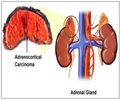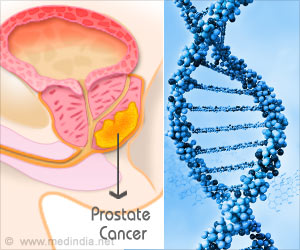Testosterone levels in American men have been declining steadily over the past two decades, a new study.
Testosterone levels in American men have been declining steadily over the past two decades, a new study in the Journal of Clinical Endocrinology and Metabolism concludes.
The reasons for this decline are unclear; the study suggests that neither aging nor changes in certain health factors, such as obesity or smoking, can completely explain the phenomenon.“Male serum testosterone levels appear to vary by generation, even after age is taken into account,” said Thomas G. Travison, Ph.D., of the New England Research Institutes (NERI) in Watertown, Mass., and lead author of the study. “In 1988, men who were 50 years old had higher serum testosterone concentrations than did comparable 50-year-old men in 1996. This suggests that some factor other than age may be contributing to the observed declines in testosterone over time.”
Testosterone is the primary male sex hormone. It is important for maintaining bone and muscle mass throughout life. Insufficient levels of testosterone have been linked to diabetes, low libido, and other medical conditions. Typically, testosterone levels in men peak around their late 20s, and then begin a gradual decline from age 30 onward. Testosterone also is present in women, but at significantly lower levels.
Travison and colleagues based their study on data from the Massachusetts Male Aging Study (MMAS). The MMAS comprised three separate data-collection periods over 17 years (1987-89, 1995-97, and 2002-04). The study involved collecting blood samples, as well as health and biographical data, from approximately 1,500 randomly selected men residing in the greater Boston area.
During each phase of the study, the researchers analyzed the subjects’ blood samples to measure total testosterone, from which they also calculated the amount of “bio-available” testosterone. Bio-available testosterone includes both free testosterone (unbound to proteins) and testosterone weakly bound to proteins (especially albumin); as its name implies, it is available to tissues to support various functions within the body.
The NERI team carefully analyzed the data to compare men of similar ages during each phase of the study. After accounting for age and additional factors such as obesity, smoking, and medications, the researchers found that, each year, the subjects’ total and bio-available testosterone decreased an average of 1.2 and 1.3 percent, respectively.
Advertisement
Travison acknowledged that hormone concentrations in the blood are difficult to measure, primarily due to normal daily fluctuations. To ensure these changes did not bias the results, two samples were obtained at each visit, and all were taken early in the morning, when testosterone levels are at their highest.
Advertisement
“Nevertheless,” said Travison, “time and technology march on, so it’s impossible to completely rule out the influence of subtle changes in the way the samples were obtained or processed. That being said, our results appear to be consistent across the various waves of the study.”
The researchers point out that, although subjects’ current health was taken into account as part of the analysis, it is impossible to account for certain health or environmental influences that may have impacted the subjects’ testosterone levels prior to enrolling in the study.
“This analysis deals with men who were born between 1915 and 1945,” said Travison, “but our baseline data were not obtained until the late 1980s, when the elder subjects were about 70 years old, and the youngest about 45. Events occurring in earlier decades could certainly help explain our results, if their effects persisted into recent years.” It is also possible that current, but unmeasured, health or environmental factors could be the root cause of the observed declines.
Source-Newswise
SRM










